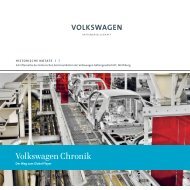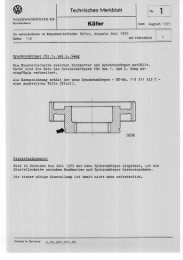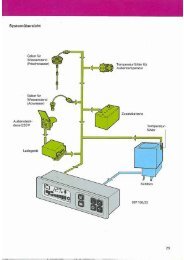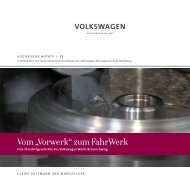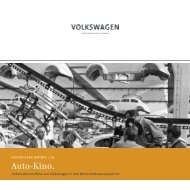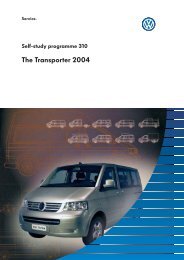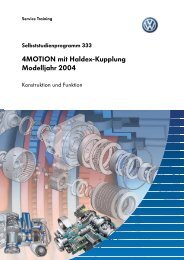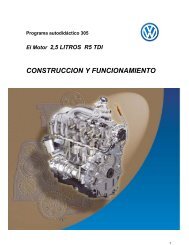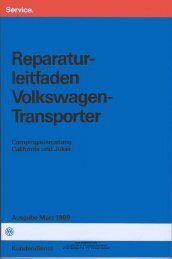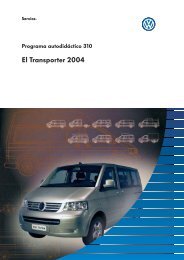HN 2: The British and their Works
HN 2: The British and their Works
HN 2: The British and their Works
Create successful ePaper yourself
Turn your PDF publications into a flip-book with our unique Google optimized e-Paper software.
that he had rejected to production, bypassing the checkpoint. 170<br />
This was not an isolated case, <strong>and</strong> furnished proof that the<br />
importance of inspection activity for a well-functioning series<br />
production was still seriously underestimated. To what extent<br />
material shortages played a part cannot be stated with certainty.<br />
At any rate, on 3rd <strong>and</strong> 4th November 1947 production came to<br />
a halt because the hardening salts supplied by the Degussa<br />
company did not comply with requirements <strong>and</strong> the disc wheels<br />
could not be processed. A transport convoy was despatched to<br />
the Soviet zone to get the necessary raw materials. 171<br />
<strong>The</strong> inspection department was not prepared to put up with<br />
transgressions of this kind, <strong>and</strong> dem<strong>and</strong>ed that those responsible<br />
be called to account. Münch took this complaint seriously<br />
<strong>and</strong> called for an investigation, in order to avoid similar incidents<br />
in the future. Only recently, the steering arms on four<br />
vehicles had fractured due to poor material quality, as a result of<br />
which the management had decided to implement a replacement<br />
campaign covering all Volkswagens, as far as this was possible.<br />
Because the defect could not be satisfactorily eliminated<br />
as things stood, Hirst obtained a detector from the <strong>British</strong> army<br />
with which all important steering components were magnetically<br />
examined for cracks in future. 172 In other ways too the<br />
Senior Resident Officer acted as a driving force for the quality<br />
development of the saloon. He constantly pressed for improvements<br />
in vehicle engineering <strong>and</strong> quality, in order to make the<br />
Volkswagen capable of holding its own with the competition. At<br />
the management meeting at the end of July 1947, when export<br />
had become a realistic prospect, Hirst announced a three-phase<br />
programme for the further development of the vehicle. Phase<br />
one comprised the attempts to procure better materials, <strong>and</strong><br />
68 69<br />
Assembly of the chassis.<br />
STRIVING FOR QUALITY



